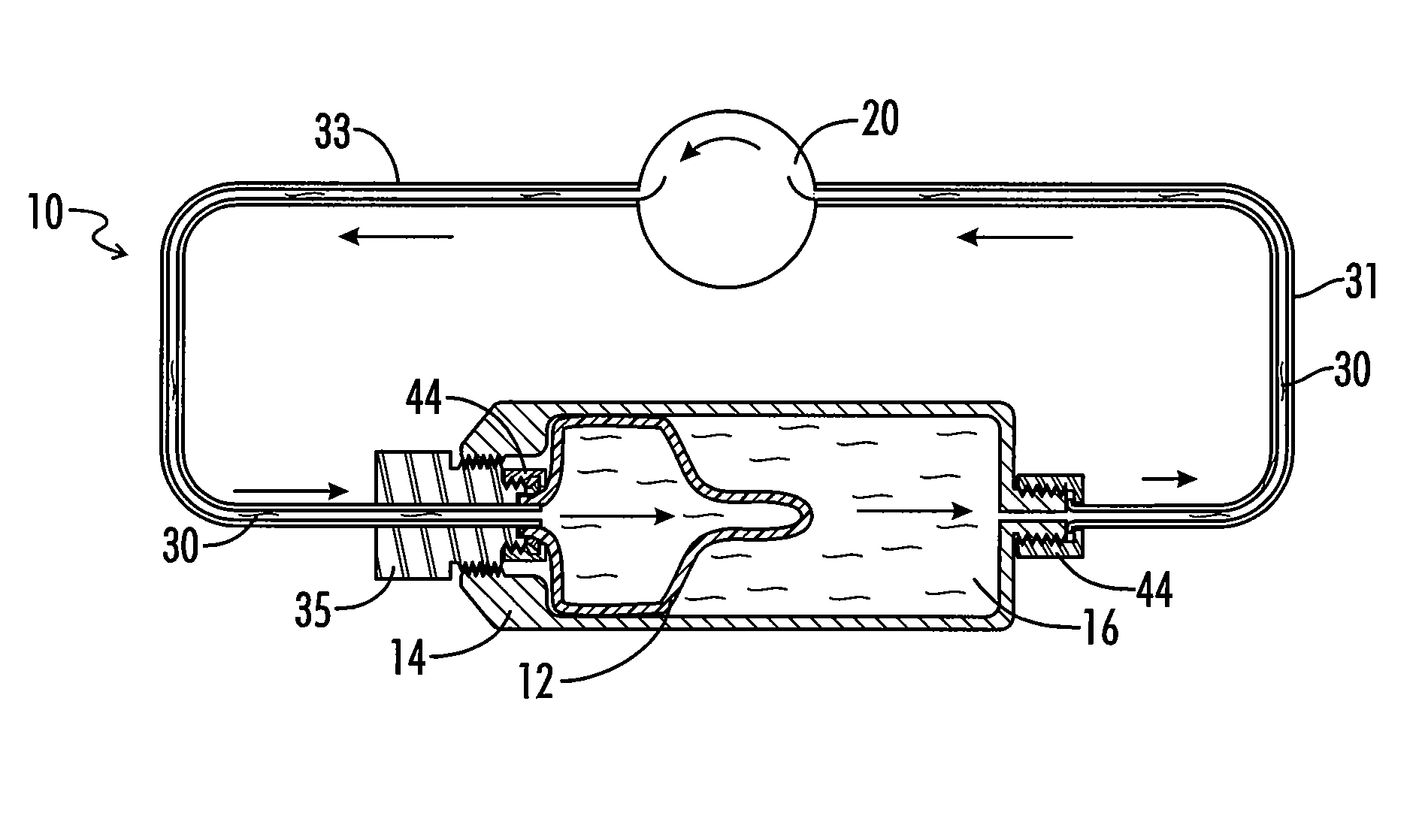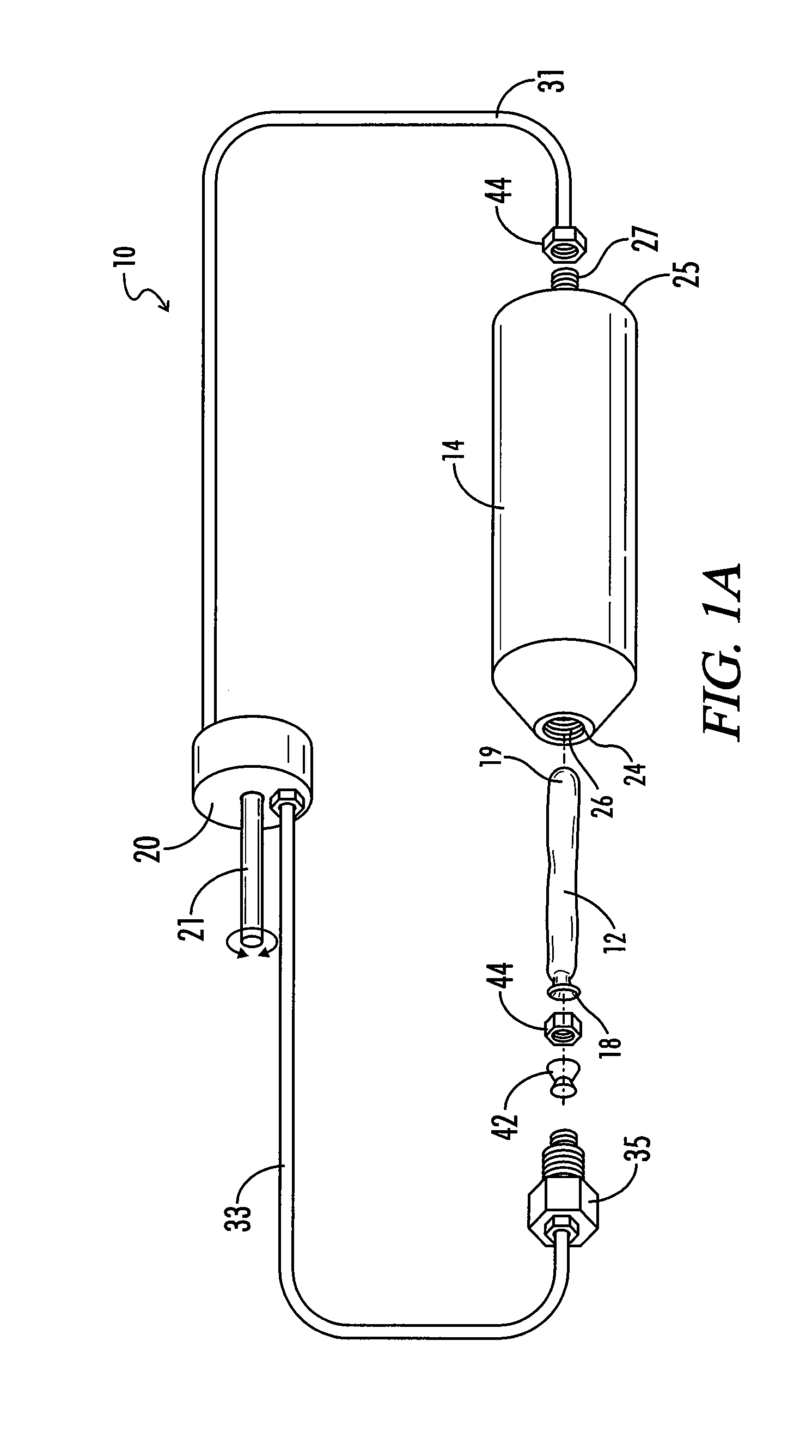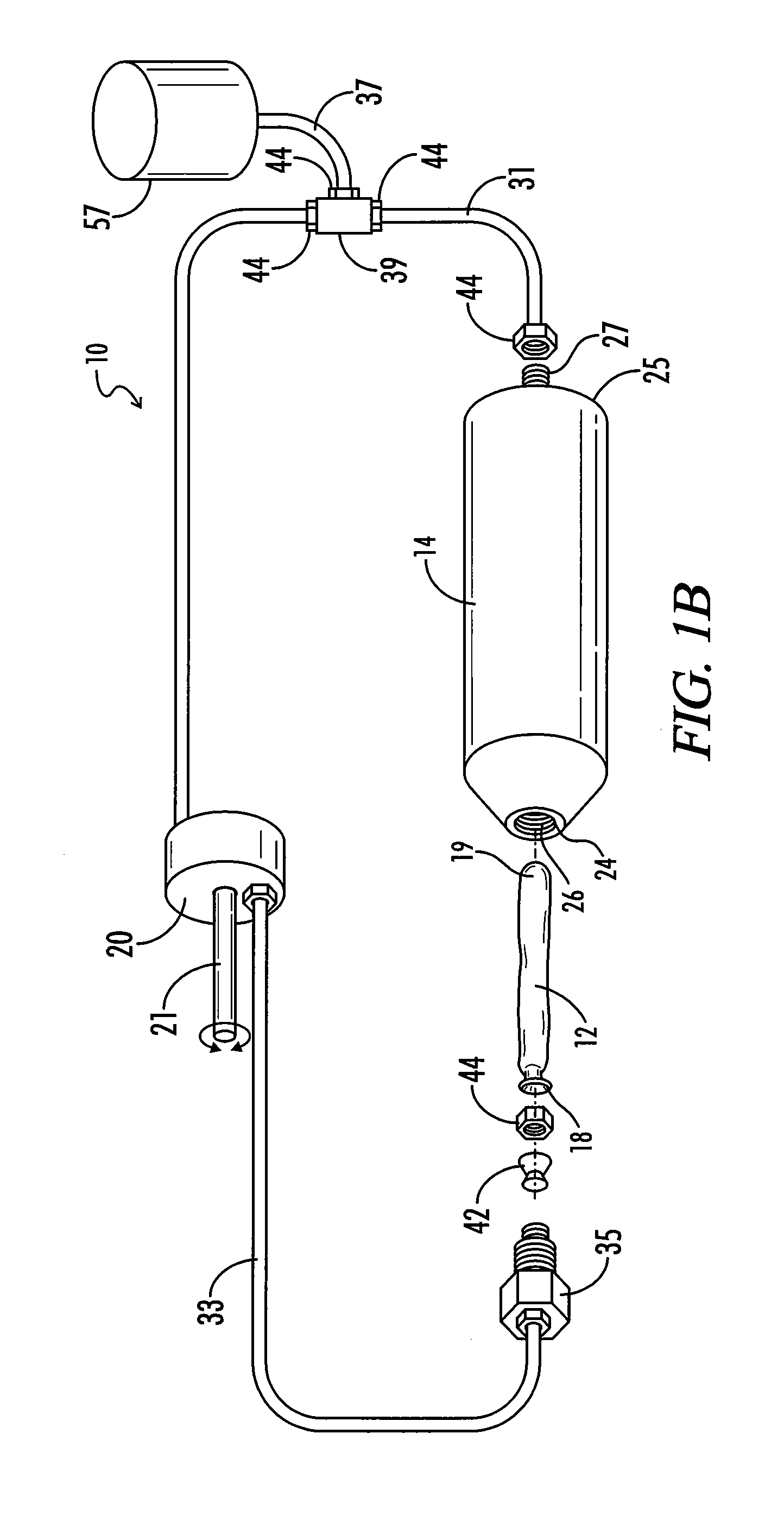Elastic hydraulic accumulator/reservoir system
a hydraulic accumulator and hydraulic accumulator technology, applied in mechanical equipment, positive displacement engines, machines/engines, etc., can solve the problems of heat loss inefficiency, accumulator drawbacks, and difficulty in implementation of hydraulic regenerative braking (hrb), and achieve the effects of less space, less sliding friction, and lighter weigh
- Summary
- Abstract
- Description
- Claims
- Application Information
AI Technical Summary
Benefits of technology
Problems solved by technology
Method used
Image
Examples
Embodiment Construction
[0027]The present invention discloses a combined hydraulic accumulator and low pressure reservoir 16. This application discloses the way in which the low pressure reservoir 16 of a hydraulic system 10 may be combined into the same space as the high pressure accumulator if an elastic accumulator is used (where “high pressure accumulator” then refers to an elastic bladder 12 contained within the housing 14 which defines the reservoir 16. As shown and described herein, the invention is to utilize a high strain-energy density elastic accumulator (as opposed to a gas-charged or spring loaded piston accumulator) within a rigid shroud, also called a housing 14. As the inside of the elastic bladder 12 is filled (using a pump / motor 20, or other means), the volume around the bladder 12 decreases. Given that most elastic materials are incompressible and occupy appreciably the same volume regardless of their shape, the total combined volume of 1) the fluid 30, which may be hydraulic fluid, in t...
PUM
 Login to View More
Login to View More Abstract
Description
Claims
Application Information
 Login to View More
Login to View More - R&D
- Intellectual Property
- Life Sciences
- Materials
- Tech Scout
- Unparalleled Data Quality
- Higher Quality Content
- 60% Fewer Hallucinations
Browse by: Latest US Patents, China's latest patents, Technical Efficacy Thesaurus, Application Domain, Technology Topic, Popular Technical Reports.
© 2025 PatSnap. All rights reserved.Legal|Privacy policy|Modern Slavery Act Transparency Statement|Sitemap|About US| Contact US: help@patsnap.com



